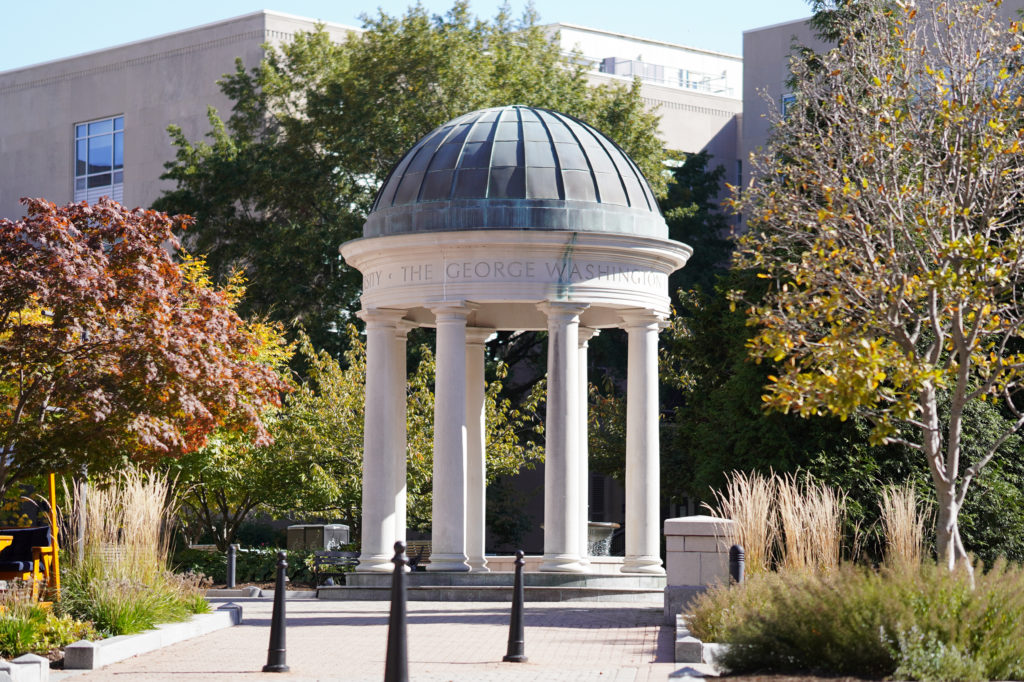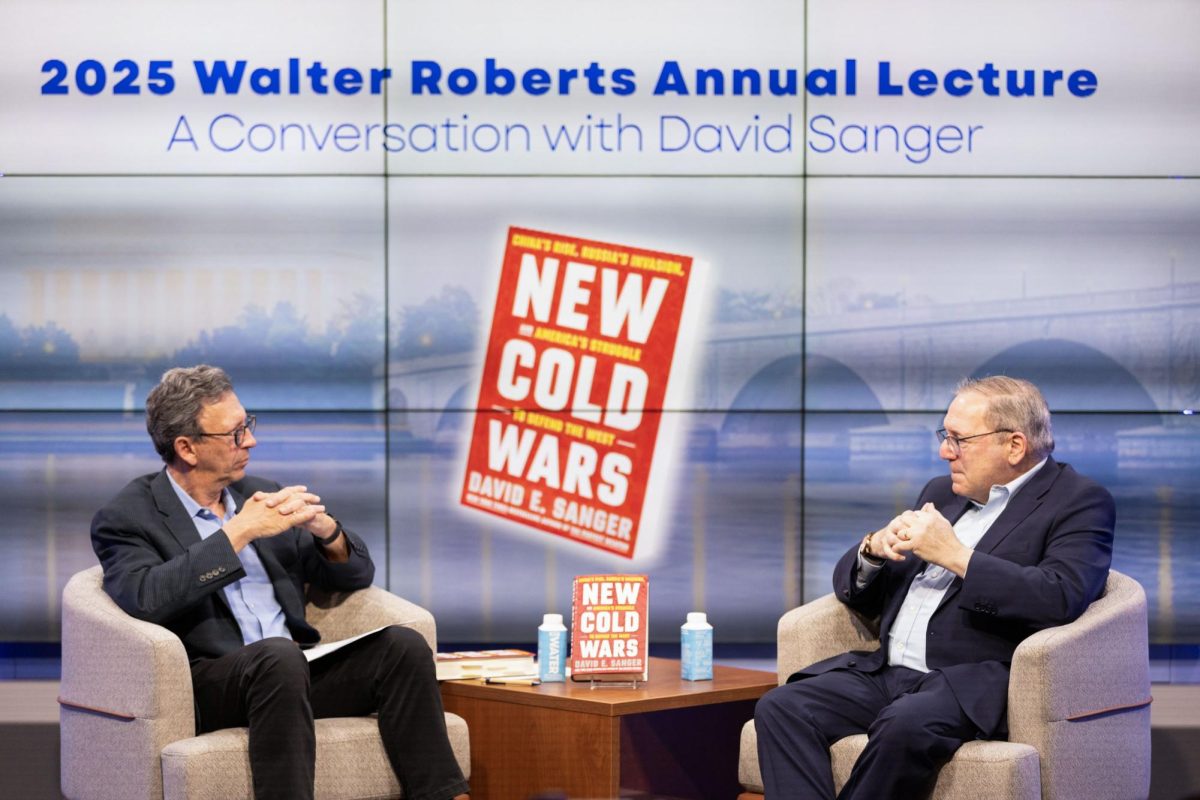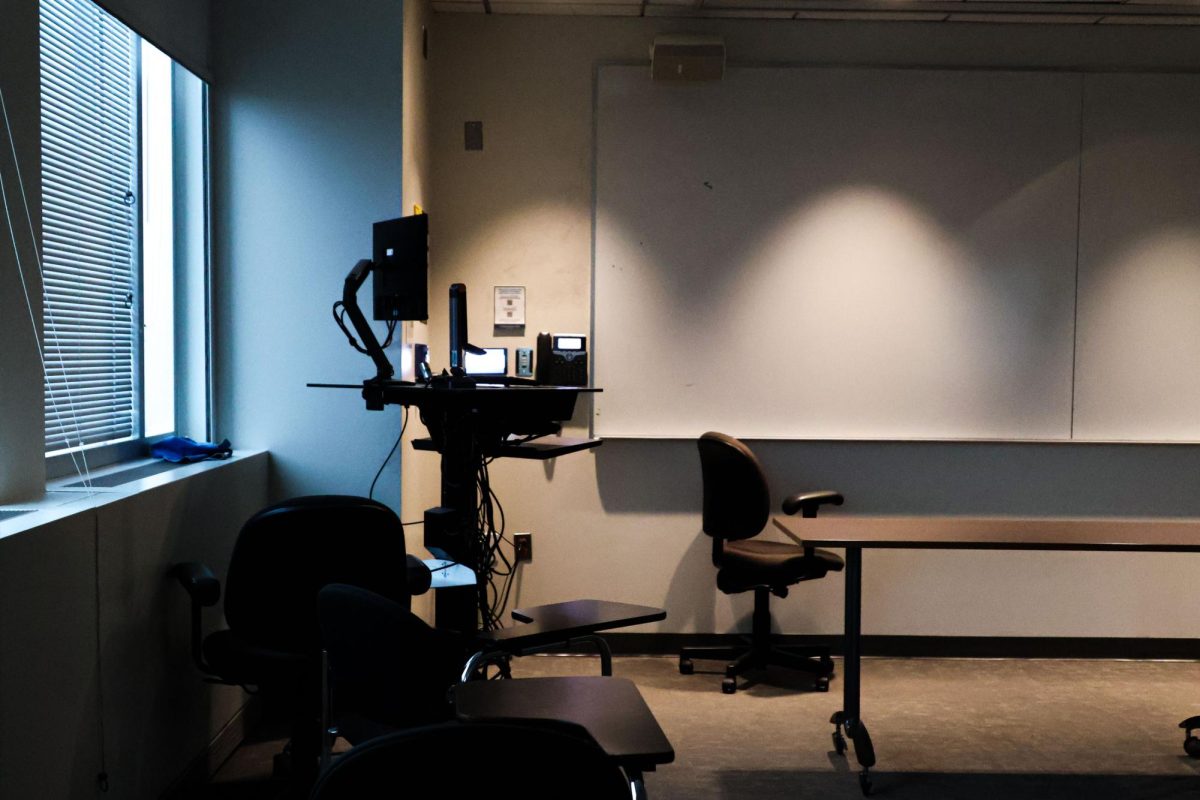It is one of the few episodes in GW history of which most members of the community are aware.
It is proof to prospective GW students that something does indeed happen here. It is the day GW saved the president’s life. Or so they say.
Edmund Morris, former President Ronald Reagan’s authorized biographer, offered a different opinion in his recently published book, Dutch: A Memoir of Ronald Reagan. A relatively minor controversy in comparison to other issues the book raised (but quite salient to GW) involved Morris’s version of the assassination attempt by John Hinckley on Reagan March 30, 1981 – just two months into Reagan’s presidency.
Morris, who will be signing copies of Dutch at the GW Bookstore Nov. 8 from 5-6 p.m., wrote that the doctors at the GW Hospital came much closer to permanently damaging and possibly killing Reagan than the public ever knew.
It is not disputed that at about 2:30 p.m., Reagan stepped out of the Washington Hilton, north of Dupont Circle, and into a hail of bullets. Reagan, his press secretary, James Brady, and two others were hit. (Brady and one of the other victims were also treated at GW).
According to Morris’ story, the president was shoved into a limousine, which in seconds was hurtling down Connecticut Avenue to the White House at 60 miles an hour. In the car Reagan was coughing blood, and the situation was obviously serious. However, no one at the time knew that a bullet was resting within an inch of Reagan’s heart. The security chief redirected the motorcade to the closest hospital, a hospital with a special phone line ready for such a catastrophe – the GW Hospital.
Reagan walked into the emergency pavilion on Washington Circle and collapsed (under the overhang that now reads Ronald Reagan Institute of Emergency Medicine).
At this point, the versions of stories told by Morris and doctors on the scene diverge, specifically on the issue of proper medical treatment. Morris’ account was so inflammatory that Dr. Joseph M. Giordano (who headed the Reagan trauma team) and Dr. John E. Hutton Jr. (a Reagan physician) wrote a letter to The Washington Post Friday. The points of contention include the claim by Morris that GW doctors did not follow standard medical procedures.
Morris writes in Dutch that some of the replacement packs pumped into him had not been warmed enough after refrigeration. Ultimately, he traded half of his own fresh blood for the staler, cooler contributions of strangers – a major physiological insult from which he would never recover.
But Giordano and Hutton took issue with Morris’ version.
Blood is not stored in freezers, as stated in Morris’ notes but usually kept in a refrigerator, the doctors wrote. By the time blood is administered through IV lines, the effect on core body temperature would probably be small.
In his office Wednesday, Giordano, who founded GW Hospital’s trauma unit, expanded upon the letter.
That’s a lot of nonsense, he said of Morris’ claims. To say he never recovered is a gross exaggeration. In regards to the cold blood and blood from outside sources – that’s a misconception that blood banks have been fighting for years. These are not medical issues.
Giordano added he was not interviewed by Morris, though Hutton was. He said Hutton’s surprise at what Morris wrote precipitated the letter.
Morris also wrote in Dutch that Reagan’s blood pressure fell dramatically because of Reagan’s beating heart. Giordano and Hutton wrote in The Post that a beating heart maintains blood pressure, it does not lower it.
Morris alleges that the extent of Reagan’s blood loss was suppressed for many years, claiming that Reagan was far closer to death than the public has ever previously known.
That’s a lot of nonsense, too, Giordano said. We didn’t suppress information. We revealed the extent of his blood loss at a press conference four days after the incident.
While Giordano said Reagan was close to death, he said that was no secret, and that Morris’ saying so is no revelation.
There were five to 10 minutes where the president could have gone either way, he said. I’ve always thought that Jerry Parr, Reagan’s security chief, was the unsung hero of the whole thing. If he had not rerouted the motorcade, and they had taken Reagan to the White House first, I think there’s a good chance he would have died.
But Reagan did survive, and by most accounts he made a complete recovery. Giordano and Hutton wrote that Reagan’s blood profile has shown no abnormalities since, despite Morris’ claim that Reagan never recovered. Giordano also pointed out that Reagan served another eight healthy years as president.
Reagan remained at the GW Hospital until April 11 after being moved from the intensive care unit to his own temporary wing on the south side of the third floor. His recovery was so fast that the day after the assassination attempt, his staff brought him a bill to sign.
I should have known I wasn’t going to avoid a staff meeting, Reagan said in Dutch.
Giordano said he was disappointed in Morris’ book.
There were a lot of factual errors that make you question the quality of the work, he said. I’m not reading the book, but a lot of people have questioned it, and it’s a shame, because of the access Morris had – he could have written a great book.
Giordano has no regrets about the treatment he gave to his most famous patient.
I think that our care was impeccable, he said.






